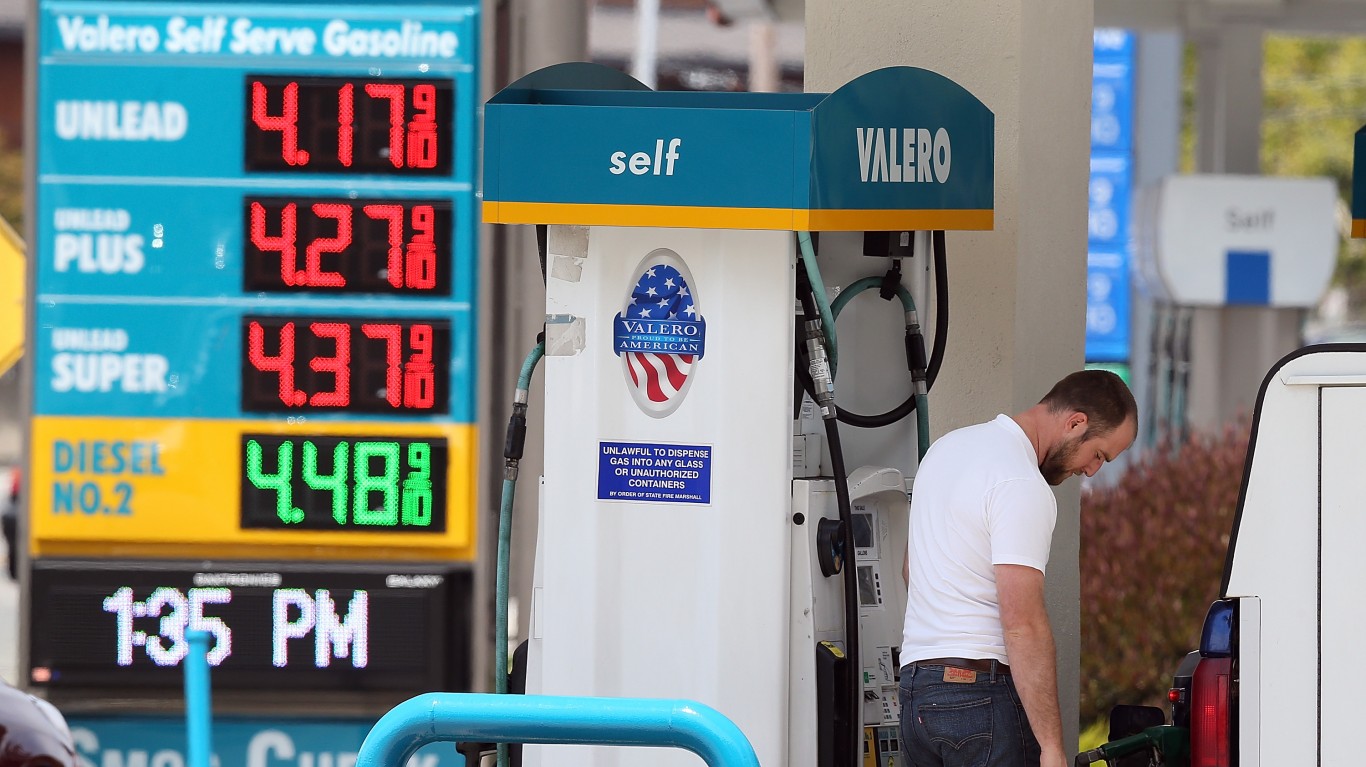
The Biden administration is reportedly contemplating a plan to sell off almost a third of America’s Strategic Petroleum Reserve (SPR). The reports have sent oil prices down by about $7.00 a barrel (6.4%) since late Wednesday afternoon. The plan being discussed would add approximately 1 million barrels of oil a day from the SPR, every day for six months, or roughly 180 million barrels. As of last Friday, the SPR held 568.3 million barrels of oil.
The price for the West Texas Intermediate (WTI) crude slid to $101.20 per barrel in early Thursday morning trading. The average price of a barrel currently stored in the SPR is $29.70.
As of Thursday morning, U.S. pump prices averaged $4.24 a gallon, according to GasBuddy, 63 cents higher than a month ago and $1.37 more than a year ago. On March 11, the average price hit $4.35 a gallon, its highest level since GasBuddy began keeping records in 2008.
Last week, U.S. refiners supplied some 19.9 million barrels of refined products per day. Of that total, 8.5 million barrels a day was finished motor gasoline, the stuff consumers pump into the gas tanks. A year ago, U.S. refiners supplied 20.3 million barrels a day, of which 8.9 million barrels were finished gasoline.
The Organization of Petroleum Exporting Countries (OPEC) and its partners, including Russia in the OPEC+ group, are meeting Thursday and are expected to ignore the Biden administration’s plea to increase oil production beyond the cartel’s current plan for a modest increase in May. Since last August, OPEC+ has increased produced production by 400,000 barrels per day every month and has agreed to boost that to 423,000 barrels a day in May.
In 2017, then-President Trump proposed releasing half the 688.1 million barrels in the SPR over a 10-year period between 2018 to 2027 with the intention of raising $16.5 billion and helping balance the budget. Congress approved the sale of up to 100 million barrels in February of 2018.
According to Department of Energy (DoE) data, almost 45 million mandated barrels had been sold by the end of the 2020 fiscal year. Since 2017, the Energy Department has also sold 15.22 million barrels as part of its modernization plan.
A strategic petroleum reserve had been under consideration in the United States since at least World War II. President Eisenhower suggested an oil reserve after the 1956 Suez Crisis. The event that prompted the creation of the SPR was the 1973–74 oil embargo, which followed the Yom Kippur War. The cutoff of oil to the United States from the Middle East was a shock to the U.S. economy. In the embargo’s aftermath, the nation established the SPR.
The SPR is the world’s largest supply of emergency crude oil, according to Energy.gov. Oil is stored in massive salt caverns along the coast of the Gulf of Mexico. Salt domes are inexpensive and a secure means of petroleum storage. The reserve operates four storage facilities in underground salt domes of the Gulf Coast, two in Louisiana and two in Texas.
Any decision to draw down crude oil from the SPR is made by the president. The SPR’s massive capacity helps to deter oil import interruptions.
The SPR has been used under these circumstances three times, most recently in June 2011 when President Obama authorized a sale of 30 million barrels of crude oil to offset disruptions in supply because of Middle East turmoil. President George W. Bush released 11 million barrels in 2005.
The Strategic Petroleum Reserve
The Strategic Petroleum Reserve is a U.S. government complex of four sites with deep underground storage caverns created in salt domes along the Texas and Louisiana Gulf Coasts that store emergency supplies of crude oil owned by the United States.
Current Storage Design Capacity: 727 million barrels
Current Inventory: See the most recent inventory report.
Current Days of Import Protection in the SPR: The SPR holds the equivalent of 89 days of import protection (based on last week’s report on net petroleum imports for the year to date of about 6.4 million barrels a day).
Average Price Paid for Oil in the Reserve: $29.70 per barrel
Investment to Date: About $27.8 billion ($7 billion for facilities based on replacement value; $20.8 billion for crude oil based on accounting value).
Drawdown Capability: Maximum nominal drawdown capability is 4.4 million barrels per day. Time for oil to enter the U.S. market is 13 days from a presidential decision.
Highest Inventory: The SPR was filled to its 727 million barrel design capacity on December 27, 2009; the inventory of 726.6 million barrels was the highest ever held in the SPR.
100 Million Americans Are Missing This Crucial Retirement Tool
The thought of burdening your family with a financial disaster is most Americans’ nightmare. However, recent studies show that over 100 million Americans still don’t have proper life insurance in the event they pass away.
Life insurance can bring peace of mind – ensuring your loved ones are safeguarded against unforeseen expenses and debts. With premiums often lower than expected and a variety of plans tailored to different life stages and health conditions, securing a policy is more accessible than ever.
A quick, no-obligation quote can provide valuable insight into what’s available and what might best suit your family’s needs. Life insurance is a simple step you can take today to help secure peace of mind for your loved ones tomorrow.
Click here to learn how to get a quote in just a few minutes.
Thank you for reading! Have some feedback for us?
Contact the 24/7 Wall St. editorial team.
 24/7 Wall St.
24/7 Wall St.



